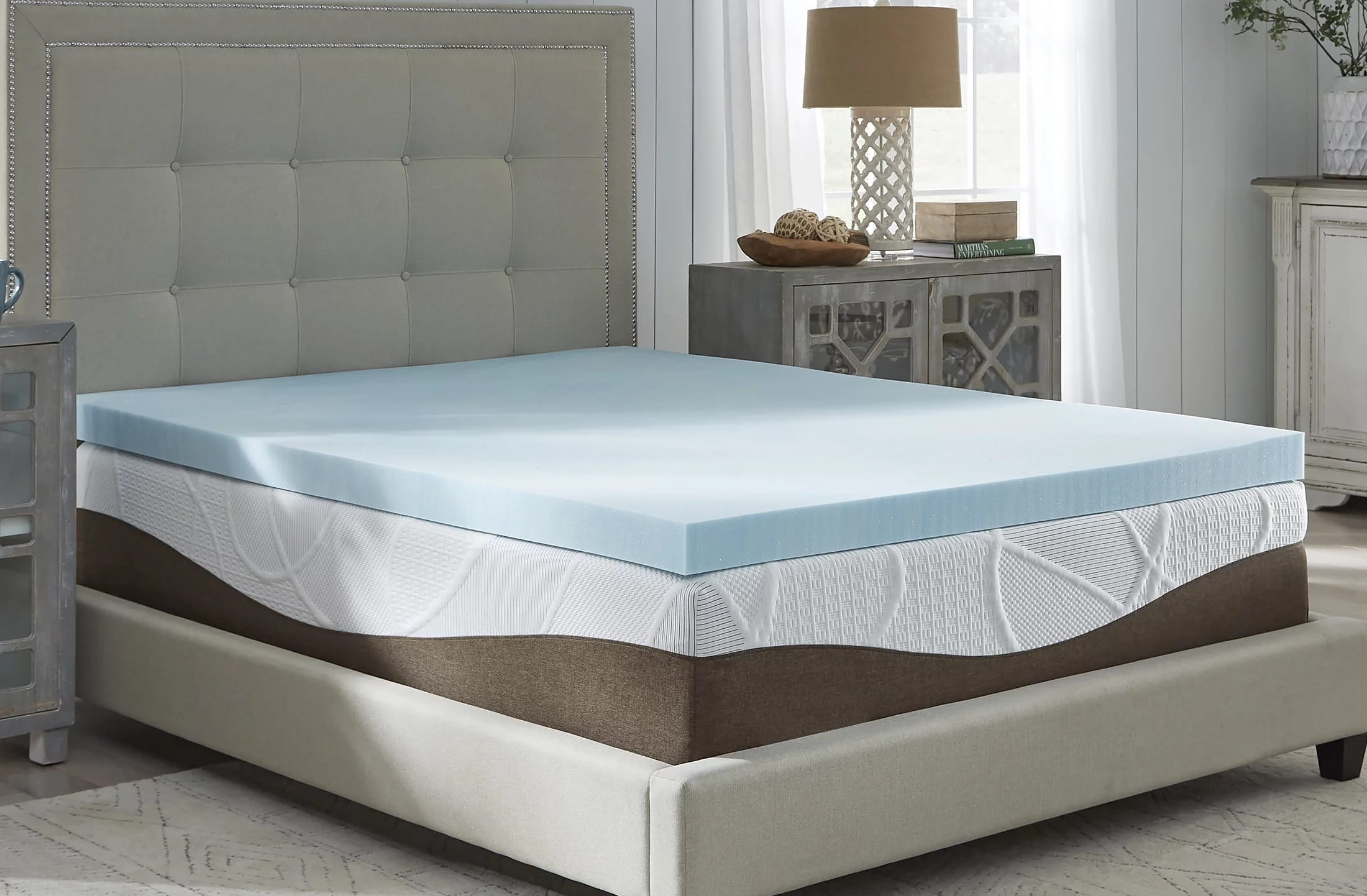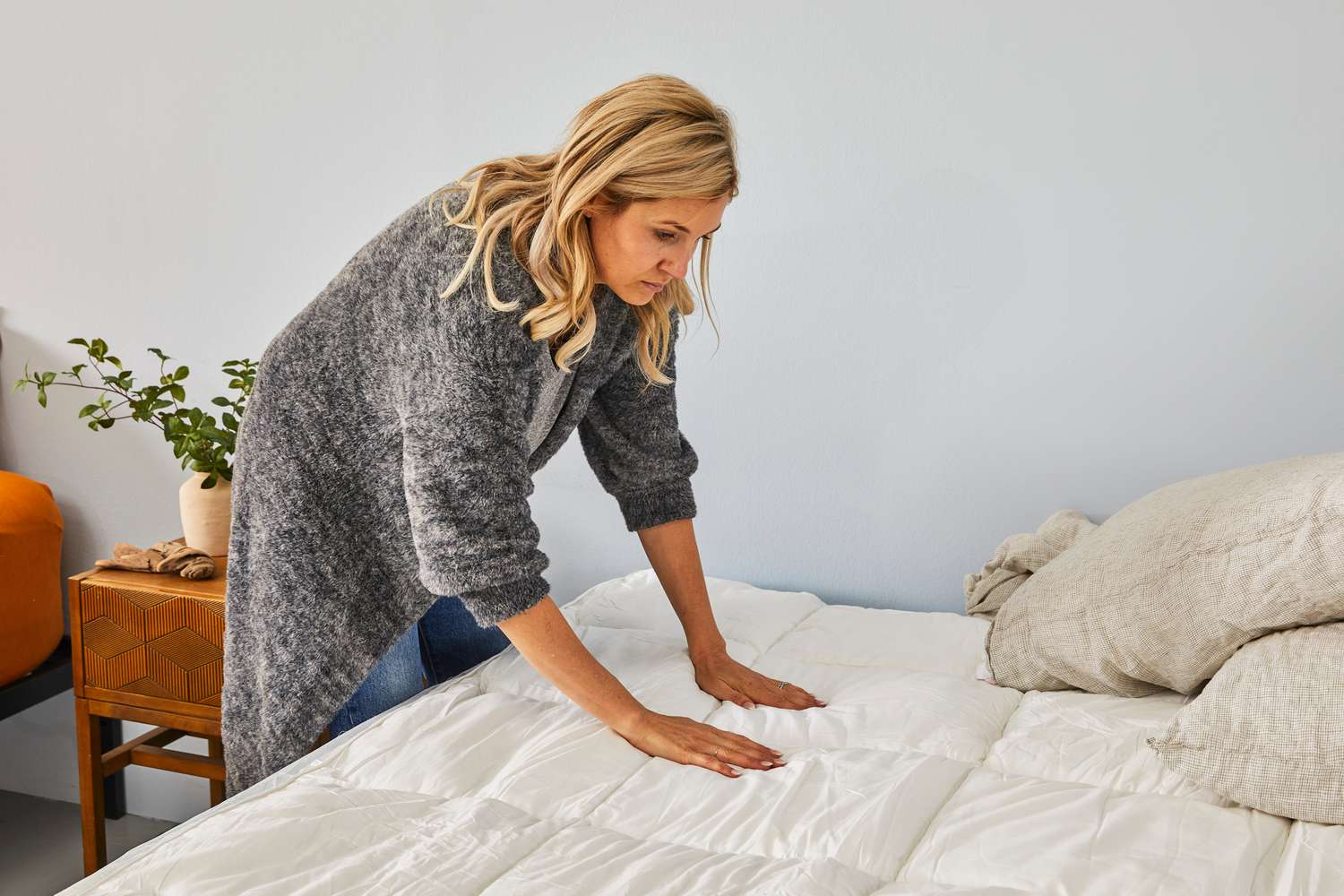Home>Furniture & Design>Bedroom Furniture>How Long Does A Memory Foam Mattress Last


Bedroom Furniture
How Long Does A Memory Foam Mattress Last
Modified: August 17, 2024
Discover how long a memory foam mattress lasts and make an informed decision for your bedroom furniture. Learn more about bedroom furniture, furniture design, and mattress longevity.
(Many of the links in this article redirect to a specific reviewed product. Your purchase of these products through affiliate links helps to generate commission for Storables.com, at no extra cost. Learn more)
**
Introduction
**
Are you getting the most out of your memory foam mattress? As a savvy consumer, you want to ensure that your investment in quality sleep is protected. A memory foam mattress is renowned for its exceptional comfort and support, but like all good things, its lifespan is not indefinite. In this comprehensive guide, we will delve into the factors that impact the longevity of memory foam mattresses, signs that indicate it's time for a replacement, and practical tips to extend its lifespan. By the end of this article, you'll be equipped with the knowledge to make informed decisions about your mattress and enjoy restful nights for years to come. So, let's embark on this journey to understand the lifespan of memory foam mattresses and how to maximize their durability.
**
Key Takeaways:
- Memory foam mattresses can last longer with proper care and maintenance. Rotating the mattress, using a protector, and controlling temperature and humidity can extend its lifespan, ensuring years of comfortable sleep.
- Signs like sagging, loss of firmness, and visible wear indicate it’s time to replace a memory foam mattress. Being attentive to these signs and implementing proactive care can help maintain quality sleep.
What is a Memory Foam Mattress?
**
Memory foam mattresses have revolutionized the way we sleep, offering unparalleled comfort and support. This innovative material, originally developed by NASA in the 1970s, molds to the body in response to heat and pressure, evenly distributing body weight. The unique ability of memory foam to contour to the body provides relief to pressure points, promoting a more restful and comfortable sleep experience.
Memory foam mattresses are composed of viscoelastic foam, a substance that is both highly energy absorbent and soft. This allows the mattress to conform to the body shape, providing personalized support. The viscoelastic properties of memory foam also make it resistant to traditional wear and tear, such as sagging and indentations, commonly associated with traditional spring mattresses.
One of the most appealing features of memory foam mattresses is their ability to isolate motion. This means that movement on one side of the bed is not transferred to the other, making memory foam mattresses an ideal choice for couples or individuals easily disturbed by motion during sleep.
Furthermore, memory foam mattresses are hypoallergenic and resistant to dust mites, making them a popular choice for individuals with allergies or respiratory issues. The material’s dense composition inhibits the accumulation of allergens, creating a healthier sleep environment.
As a result of these unique qualities, memory foam mattresses have gained widespread popularity and are favored by those seeking a supportive and comfortable sleep surface. However, like all products, memory foam mattresses have a finite lifespan, which can be influenced by various factors.
**
Factors Affecting the Lifespan of a Memory Foam Mattress
**
The lifespan of a memory foam mattress is influenced by several key factors, each playing a significant role in determining its longevity. Understanding these factors can help you make informed decisions when selecting a mattress and caring for it over time.
- Quality of Materials: The quality of the memory foam and other materials used in the construction of the mattress is a primary determinant of its lifespan. Higher density foam tends to be more durable and resilient, offering better long-term support and comfort.
- Usage and Weight Distribution: The frequency and manner in which the mattress is used can impact its lifespan. Mattresses subjected to heavier loads or constant use may experience greater wear and tear over time. Additionally, uneven weight distribution, such as sitting or sleeping in the same spot consistently, can lead to premature deterioration of the foam.
- Maintenance and Care: Proper maintenance and care practices, such as regular rotation, using a mattress protector, and keeping the mattress clean, can significantly extend its lifespan. These measures help minimize the accumulation of dust, moisture, and wear on the mattress, preserving its integrity.
- Environmental Factors: Environmental conditions, such as temperature and humidity levels, can affect the performance and longevity of a memory foam mattress. Exposure to excessive heat or moisture may contribute to the deterioration of the foam and other materials, potentially shortening the mattress’s lifespan.
- Supportive Foundation: The foundation or base on which the memory foam mattress rests plays a crucial role in its durability. A supportive, properly designed bed frame or foundation can prevent premature sagging and ensure the mattress maintains its structural integrity over time.
By considering these factors, you can make informed choices to optimize the lifespan of your memory foam mattress and maximize its performance for years to come.
**
A memory foam mattress can last 7-10 years with proper care. To extend its lifespan, rotate the mattress regularly, use a mattress protector, and avoid jumping on the bed.
Signs That Your Memory Foam Mattress Needs Replacing
**
While memory foam mattresses are known for their resilience and durability, they are not immune to the effects of time and wear. Recognizing the signs that indicate a memory foam mattress may need replacing is essential for maintaining quality sleep and overall well-being.
- Sagging or Indentations: Over time, the supportive structure of a memory foam mattress may start to deteriorate, leading to noticeable sagging or indentations in the sleep surface. These impressions can compromise the even distribution of body weight, resulting in discomfort and reduced support.
- Loss of Firmness and Support: As memory foam ages, it may lose its original firmness and supportive qualities. This can manifest as a lack of adequate support for the body, leading to discomfort, aches, and disrupted sleep patterns.
- Visible Wear and Tear: Visual cues, such as fraying fabric, tears, or visible damage to the mattress cover, may indicate that the mattress is reaching the end of its lifespan. Additionally, the appearance of lumps, bumps, or irregularities in the foam layers can signal a loss of structural integrity.
- Increased Discomfort: If you find yourself experiencing discomfort, stiffness, or pain upon waking, it may be a sign that your memory foam mattress is no longer providing the necessary support and pressure relief. This can impact your overall sleep quality and contribute to physical discomfort throughout the day.
- Allergen Accumulation: Over time, memory foam mattresses may become more susceptible to allergen accumulation, leading to potential respiratory issues and discomfort for individuals with allergies or sensitivities. If regular cleaning and maintenance no longer alleviate these concerns, it may be time to consider replacing the mattress.
- Persistent Odors: Unpleasant or persistent odors emanating from the mattress, despite regular cleaning and airing out, can be indicative of deep-seated issues such as mold or bacterial growth. These issues can compromise the hygiene and safety of the sleep environment, necessitating mattress replacement.
By being attentive to these signs and symptoms, you can proactively address the condition of your memory foam mattress and make informed decisions regarding its potential replacement, ensuring continued comfort and support for restful sleep.
**
Extending the Lifespan of Your Memory Foam Mattress
**
Maximizing the lifespan of your memory foam mattress involves proactive care and maintenance practices that preserve its quality and performance over time. By implementing the following strategies, you can extend the longevity of your mattress, ensuring years of restful and rejuvenating sleep.
- Use a Mattress Protector: Investing in a high-quality, waterproof mattress protector can shield your memory foam mattress from spills, stains, and moisture, preserving its integrity and cleanliness. A protector also acts as a barrier against dust mites and allergens, contributing to a healthier sleep environment.
- Rotate the Mattress: Regularly rotating your memory foam mattress can promote even wear and minimize the development of permanent indentations. This simple practice distributes the impact of body weight more evenly, preserving the supportive qualities of the foam over time.
- Adequate Support: Ensure that your memory foam mattress is placed on a supportive, properly designed bed frame or foundation. A sturdy base can prevent premature sagging and maintain the structural integrity of the mattress, contributing to its long-term durability.
- Proper Cleaning and Maintenance: Follow the manufacturer’s guidelines for cleaning and maintaining your memory foam mattress. This may include regular vacuuming, spot cleaning, and airing out the mattress to prevent the accumulation of dust, debris, and moisture. Avoid using harsh chemicals or excessive moisture during cleaning to protect the foam and fabric.
- Temperature and Humidity Control: Maintain a consistent and moderate sleep environment to prevent excessive heat or humidity from affecting the performance of your memory foam mattress. Proper ventilation and temperature control can help preserve the integrity of the foam and minimize the risk of premature deterioration.
- Avoiding Excessive Weight and Impact: Minimize activities that subject the mattress to excessive weight or impact, such as jumping or standing on the bed. These actions can strain the foam and compromise its long-term resilience and support.
By incorporating these practices into your mattress care routine, you can safeguard the quality and longevity of your memory foam mattress, ensuring that it continues to provide the comfort and support you deserve for years to come.
**
Read more: How Long To Air Out A Memory Foam Mattress
Conclusion
**
Understanding the lifespan of a memory foam mattress and the factors that influence its durability empowers you to make informed decisions about your sleep investment. While memory foam mattresses offer exceptional comfort and support, they are not immune to the effects of time and wear. By recognizing the signs that indicate a mattress may need replacing and implementing proactive maintenance strategies, you can extend its lifespan and maximize your sleep quality.
Remember that the quality of materials, usage patterns, maintenance practices, and environmental factors all play a role in determining the longevity of a memory foam mattress. By choosing a high-quality mattress, using protective measures, and adhering to proper care guidelines, you can ensure that your mattress continues to provide restful and rejuvenating sleep for years to come.
Ultimately, investing in a memory foam mattress is an investment in your well-being and overall quality of life. By prioritizing its care and maintenance, you can enjoy the benefits of superior comfort and support while safeguarding its long-term performance. Whether you’re seeking relief from pressure points, motion isolation, or allergen resistance, a well-maintained memory foam mattress can continue to meet your sleep needs for an extended period.
As you embark on your journey to enhance the lifespan of your memory foam mattress, remember that proactive care and attention to detail are key to preserving its integrity and performance. By incorporating the recommended practices and remaining attentive to the signs of wear and tear, you can ensure that your memory foam mattress remains a sanctuary of comfort and rejuvenation for years to come.
Frequently Asked Questions about How Long Does A Memory Foam Mattress Last
Was this page helpful?
At Storables.com, we guarantee accurate and reliable information. Our content, validated by Expert Board Contributors, is crafted following stringent Editorial Policies. We're committed to providing you with well-researched, expert-backed insights for all your informational needs.















0 thoughts on “How Long Does A Memory Foam Mattress Last”